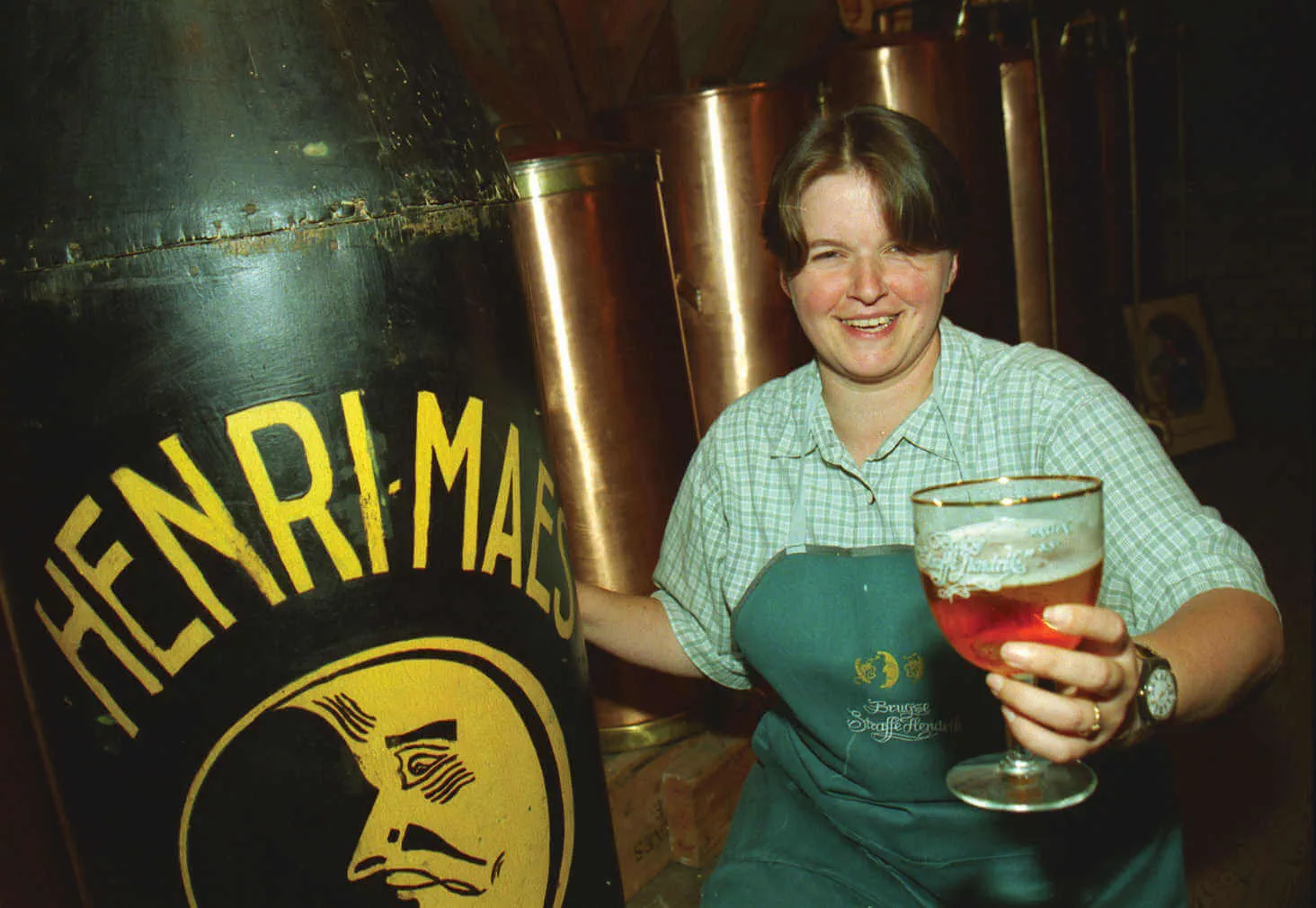A good percentage of the tourists you meet in Bruges are beer pilgrims. For two nights in a row I’ve shared a table or bar with travelers, here specifically to enjoy the fine local beer. Run by Daisy, the ’t Brugs Beertje is beloved among beer aficionados for stocking more than 300 Belgian varieties.
I grabbed a stool at the bar with an agenda: to check material on Belgian beers for my guidebook. I planned to pick Daisy’s brain. But I was surrounded by beer experts, all happy to clue me in. Soon I had a chemistry lab of four different brews in front of me — each with its distinct beaker. A critical part of the beer culture here is the glass, which must fit the local variety.
Four brews were lined up in front of me: Zot (“the fool”), the only beer actually brewed in Bruges, is considered one of Belgium’s best. A kriek is made with bitter cherries. An apple lambic is what you’d order for friends who “don’t like beer.” The Chimay, brewed by Trappist monks, was new to me and perhaps the smoothest and most complex brew I had ever tasted. Finishing my glass, I thought: Chimay would almost make celibacy livable.
Sitting at the bar, I was surrounded by talkative Belgians. I mentioned how unpredictable the weather has been, and they explained they have “nice weather 20 times a day.” Loosened up by a few Zots, my Belgian stool mates started talking about their northern neighbors: “The Dutch have the worst beer, Heineken, but sell it all over the world. Belgians make far better beer, and it is barely exported. Those Dutch could sell a fridge to an Eskimo. The first thing the Dutch ask you is about money — how much people make and how much things cost — which is taboo here in Belgium.”
As I conversed effortlessly with a bunch of old Belgians in English, it occurred to me that the language barrier had sunk to new lows. This was really a switch. In the past, only young people were fluent enough in English to be able to clue me in on things. Consequently I would get a young perspective. Now that European schools have been teaching English for many years, even retired people likely speak the language. It’s a new age of communication.
Speaking of modern communication in Europe, it’s never been easier. Upon arrival at the train station, my first stop in this country, I bought a Belgian SIM card for my cell phone. When I asked where the shop was, the information person directed me to a machine. I popped a 10-euro bill into the SIM card dispenser and got my chip with a Belgian phone number and 7.50 euros of credit for making calls.
While communication is simple, the challenge for Americans is to survive on a budget. In Belgian restaurants (as in most of Europe), $30 is the going price for a main course in a decent restaurant. And no restaurant here serves tap water. They claim their tap water is “recycled” and that a bunch of people got sick drinking it a few years ago. So, apparently, the government doesn’t allow restaurants to serve it. That makes expensive eateries even tougher on the pocketbook.
That’s the bad news. The good news: You can eat cheap in the pubs. Go low end on the food — you can get hearty bowls of spaghetti for $10 — and go high end on the beer, sampling the best in Europe for $4 a bottle. This allows the poor American tourist to have two great beers and a basic meal for $18.
As a beginner in Daisy’s pub, I was extremely steep on the learning curve — but it was a fun education at an affordable price.
Rick Steves (www.ricksteves.com) writes European travel guidebooks and hosts travel shows on public television and public radio. Email him at
 English
English  Dansk
Dansk  Deutsch
Deutsch  Nederlands
Nederlands  Norsk
Norsk  Svenska
Svenska 



